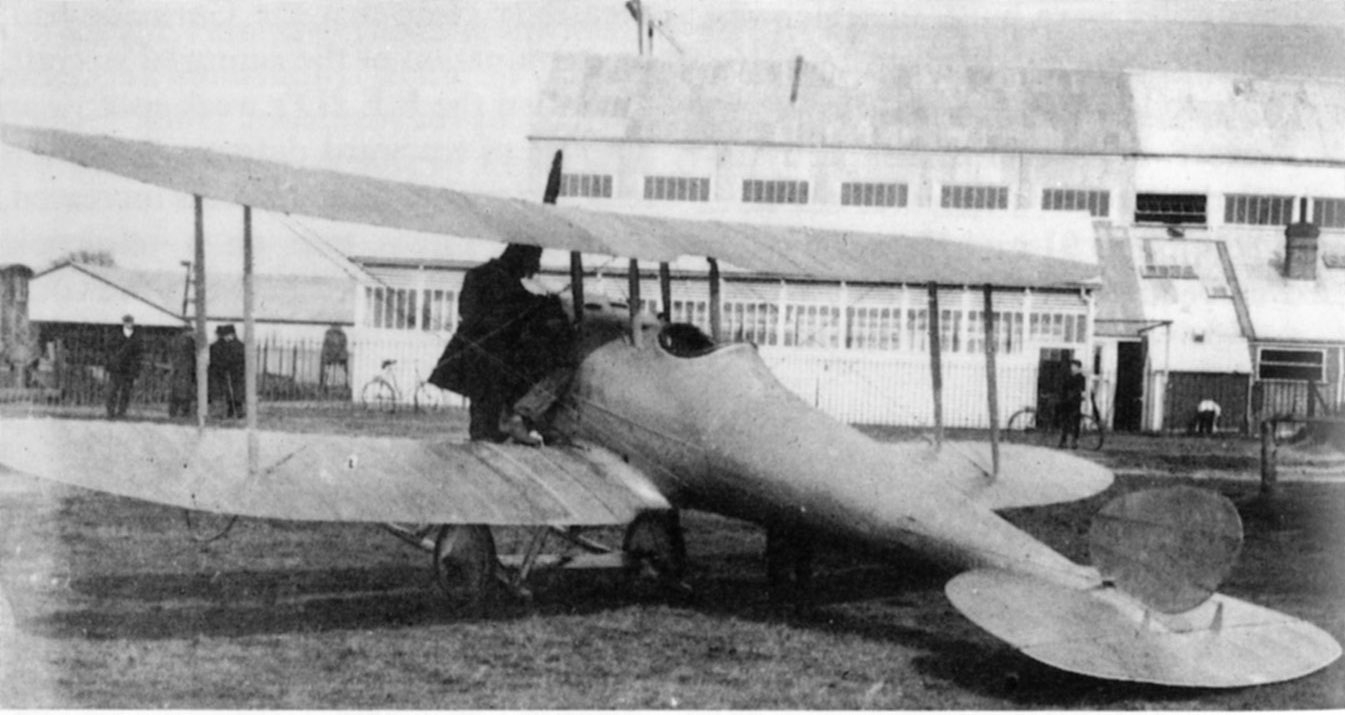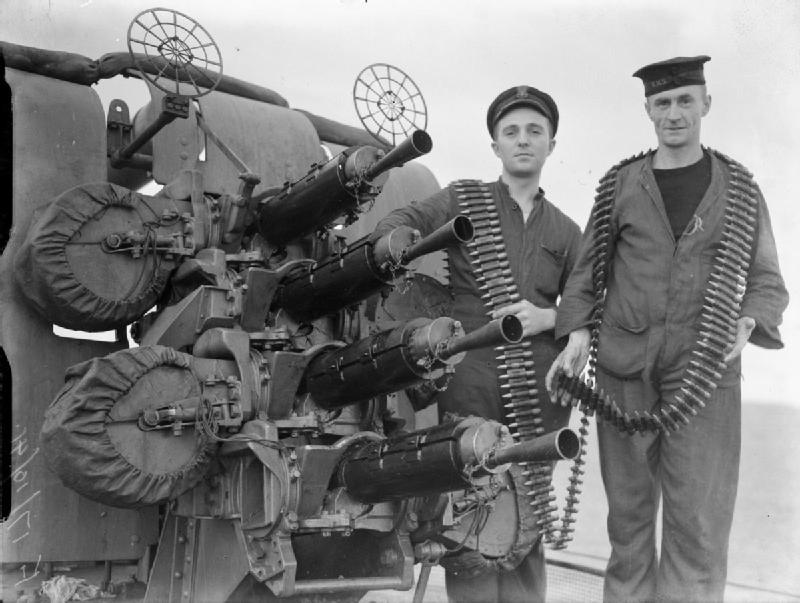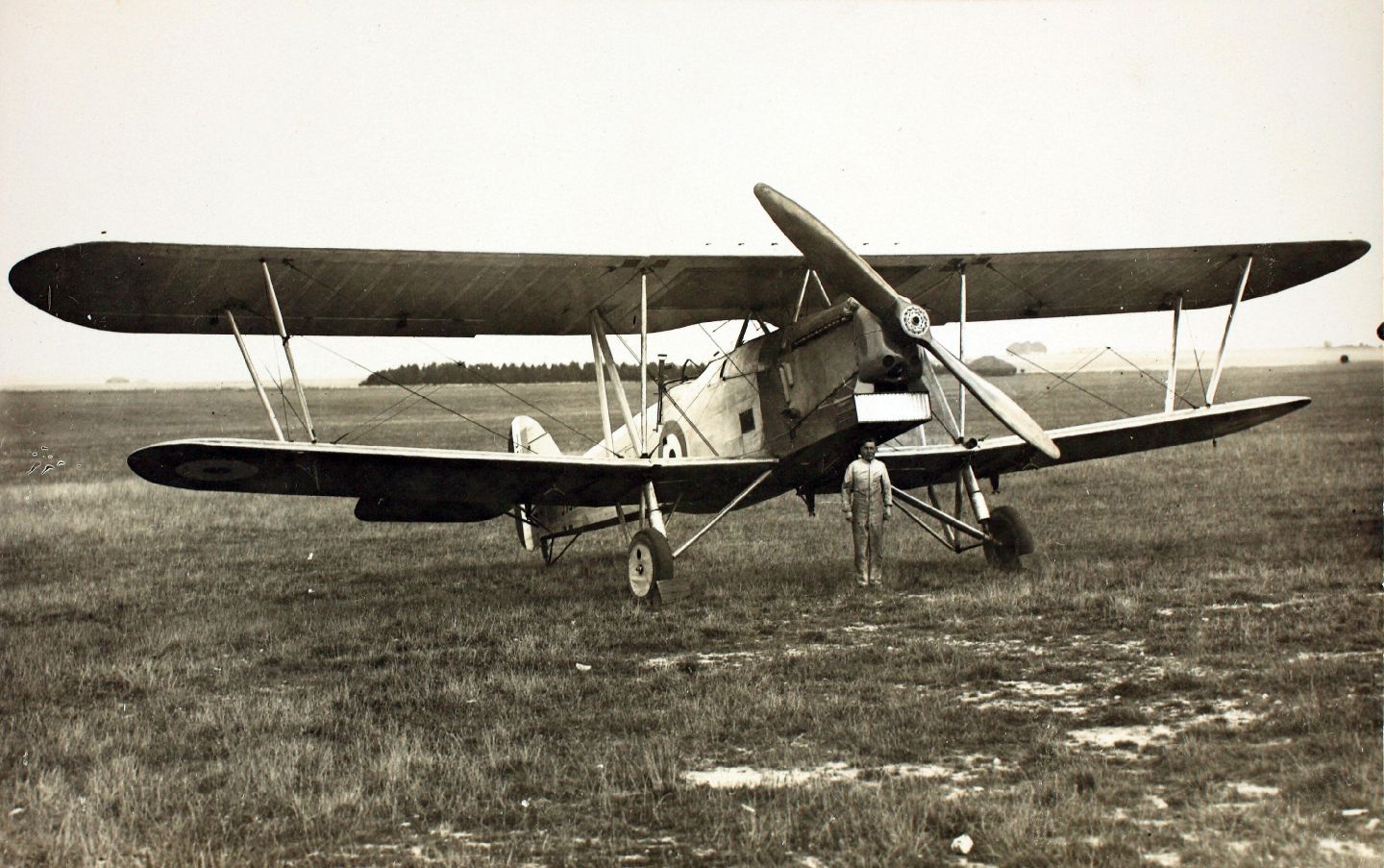|
Handley Page HP.28 Handcross
The Handley Page Handcross was a single-engined biplane day bomber built to an Air Ministry specification. It was not put into production and only the three prototypes were built. Development In August 1923 the Air Ministry issued List of Air Ministry specifications#1920–1929, specification 26/23, which called for a day bomber powered by a Rolls-Royce Condor#Specifications (Condor III), Rolls-Royce Condor III engine which could carry a 550 lb (250 kg) bomb load with a 500-mile (800 km) range. In response, Handley Page designed what was known at the time as the C/7 Handcross but retrospectively became the H.P.28 Handcross after the introduction of the familiar H.P. type numbers in about 1927. The Handcross was constructed from wood and fabric throughout. It was a three-bay biplane with equal-span wings without stagger or sweep. The wings had parallel chord but the lower planes were significantly narrower than the upper; only the lower planes carried dihedral. Ail ... [...More Info...] [...Related Items...] OR: [Wikipedia] [Google] [Baidu] |
WikiProject Aircraft
A WikiProject, or Wikiproject, is an affinity group for contributors with shared goals within the Wikimedia movement. WikiProjects are prevalent within the largest wiki, Wikipedia, and exist to varying degrees within Wikimedia project, sibling projects such as Wiktionary, Wikiquote, Wikidata, and Wikisource. They also exist in different languages, and translation of articles is a form of their collaboration. During the COVID-19 pandemic, CBS News noted the role of Wikipedia's WikiProject Medicine in maintaining the accuracy of articles related to the disease. Another WikiProject that has drawn attention is WikiProject Women Scientists, which was profiled by ''Smithsonian Magazine, Smithsonian'' for its efforts to improve coverage of women scientists which the profile noted had "helped increase the number of female scientists on Wikipedia from around 1,600 to over 5,000". On Wikipedia Some Wikipedia WikiProjects are substantial enough to engage in cooperative activities with outsi ... [...More Info...] [...Related Items...] OR: [Wikipedia] [Google] [Baidu] |
RAE Farnborough
The Royal Aircraft Establishment (RAE) was a British research establishment, known by several different names during its history, that eventually came under the aegis of the UK Ministry of Defence (MoD), before finally losing its identity in mergers with other institutions. The British Army Balloon Factory was established on Farnborough Common in the early 1900s. By 1912 it had come under civilian control and was the Royal Aircraft Factory (RAF) In 1918 it was renamed Royal Aircraft Establishment to prevent confusion with the newly created Royal Air Force. The first site was at Farnborough Airfield ("RAE Farnborough") in Hampshire to which was added a second site RAE Bedford (Bedfordshire) in 1946. On 1 May 1988 it was renamed the Royal Aerospace Establishment (RAE) before merging with other research entities to become part of the new Defence Research Agency in 1991. History In 1904–1906 the Army Balloon Factory, which was part of the Army School of Ballooning, under the ... [...More Info...] [...Related Items...] OR: [Wikipedia] [Google] [Baidu] |
Aircraft With Fixed Conventional Landing Gear
An aircraft ( aircraft) is a vehicle that is able to fly by gaining support from the air. It counters the force of gravity by using either static lift or the dynamic lift of an airfoil, or, in a few cases, direct downward thrust from its engines. Common examples of aircraft include airplanes, rotorcraft (including helicopters), airships (including blimps), gliders, paramotors, and hot air balloons. Part 1 (Definitions and Abbreviations) of Subchapter A of Chapter I of Title 14 of the U. S. Code of Federal Regulations states that aircraft "means a device that is used or intended to be used for flight in the air." The human activity that surrounds aircraft is called ''aviation''. The science of aviation, including designing and building aircraft, is called ''aeronautics.'' Crewed aircraft are flown by an onboard pilot, whereas unmanned aerial vehicles may be remotely controlled or self-controlled by onboard computers. Aircraft may be classified by different criteria, such as ... [...More Info...] [...Related Items...] OR: [Wikipedia] [Google] [Baidu] |
Biplanes
A biplane is a fixed-wing aircraft with two main wings stacked one above the other. The first powered, controlled aeroplane to fly, the Wright Flyer, used a biplane wing arrangement, as did many aircraft in the early years of aviation. While a biplane wing structure has a structural advantage over a monoplane, it produces more drag (aerodynamics), drag than a monoplane wing. Improved structural techniques, better materials and higher speeds made the biplane configuration obsolete for most purposes by the late 1930s. Biplanes offer several advantages over conventional cantilever monoplane designs: they permit lighter wing structures, low wing loading and smaller span for a given wing area. However, interference between the airflow over each wing increases drag substantially, and biplanes generally need extensive bracing, which causes additional drag. Biplanes are distinguished from tandem wing arrangements, where the wings are placed forward and aft, instead of above and below. ... [...More Info...] [...Related Items...] OR: [Wikipedia] [Google] [Baidu] |
Aircraft First Flown In 1925
An aircraft ( aircraft) is a vehicle that is able to fly by gaining support from the air. It counters the force of gravity by using either static lift or the dynamic lift of an airfoil, or, in a few cases, direct downward thrust from its engines. Common examples of aircraft include airplanes, rotorcraft (including helicopters), airships (including blimps), gliders, paramotors, and hot air balloons. Part 1 (Definitions and Abbreviations) of Subchapter A of Chapter I of Title 14 of the U. S. Code of Federal Regulations states that aircraft "means a device that is used or intended to be used for flight in the air." The human activity that surrounds aircraft is called ''aviation''. The science of aviation, including designing and building aircraft, is called ''aeronautics.'' Crewed aircraft are flown by an onboard pilot, whereas unmanned aerial vehicles may be remotely controlled or self-controlled by onboard computers. Aircraft may be classified by different criteria, such ... [...More Info...] [...Related Items...] OR: [Wikipedia] [Google] [Baidu] |
1920s British Bomber Aircraft
Nineteen or 19 may refer to: * 19 (number) * One of the years 19 BC, AD 19, 1919, 2019 Films * 19 (film), ''19'' (film), a 2001 Japanese film * Nineteen (1987 film), ''Nineteen'' (1987 film), a 1987 science fiction film * ''19-Nineteen'', a 2009 South Korean film * ''Diciannove'', a 2024 Italian drama film informally referred to as "Nineteen" in some sources Science * Potassium, an alkali metal * 19 Fortuna, an asteroid Music * 19 (band), a Japanese pop music duo Albums * 19 (Adele album), ''19'' (Adele album), 2008 * ''19'', a 2003 album by Alsou * ''19'', a 2006 album by Evan Yo * ''19'', a 2018 album by MHD (rapper), MHD * ''19'', one half of the double album ''63/19'' by Kool A.D. * ''Number Nineteen'', a 1971 album by American jazz pianist Mal Waldron * XIX (EP), ''XIX'' (EP), a 2019 EP by 1the9 Songs * 19 (song), "19" (song), a 1985 song by British musician Paul Hardcastle * "Stone in Focus", officially "#19", a composition by Aphex Twin * "Nineteen", a song fr ... [...More Info...] [...Related Items...] OR: [Wikipedia] [Google] [Baidu] |
Handley Page Aircraft
Handley may refer to: Places In the United Kingdom *Handley, Cheshire, a village *Handley, a hamlet in the parish of Stretton, Derbyshire * Middle Handley, a hamlet in the parish of Unstone, Derbyshire * Nether Handley, a hamlet in the parish of Unstone, Derbyshire * West Handley, a hamlet in the parish of Unstone, Derbyshire *Handley, a village in Dorset now known as Sixpenny Handley In the United States * Handley, Dallas County, Missouri * Handley (Fort Worth), a former town currently located with the city of Fort Worth, Texas * Handley, West Virginia * John Handley High School, Winchester, Virginia Other uses * Handley (surname) * Handley Page H.P.42, British four-engine long-range biplane airliners in service from 1931 to 1940 See also *Hanley (other) Hanley Hanley is one of the Federation of Stoke-on-Trent, six towns that, along with Burslem, Longton, Staffordshire, Longton, Fenton, Staffordshire, Fenton, Tunstall, Staffordshire, Tunstall and Stoke-upon-Trent, ... [...More Info...] [...Related Items...] OR: [Wikipedia] [Google] [Baidu] |
Bristol Berkeley
The Bristol Berkeley was built to a British government specification for a single-engine day or night bomber. Three of these two-seat biplanes were built, but no contract for further production was awarded. Development In August 1923, British aircraft manufacturers were invited to submit designs to Air Ministry Specification 26/23, which called for a single Rolls-Royce Condor-engined two-seat day or night bomber. The Berkeley was Bristol's response, designed largely by W.T. Reid with finishing touches from Bristol's longtime chief designer, Frank Barnwell. It was a fabric-covered all-metal structured three-bay biplane, with equal span, unswept and unstaggered wings with Frise-type ailerons on the upper and lower planes. Structurally, the wings were of rolled steel and duralumin. The fuselage was built from steel tubes and had a rectangular cross section. The pilot sat forward of the leading edge of the wing in an open cockpit and the gunner/observer in a cockpit well aft, f ... [...More Info...] [...Related Items...] OR: [Wikipedia] [Google] [Baidu] |
Scarff Ring
The Scarff ring was a type of machine gun mounting developed during the First World War by Warrant Officer (Gunner) F. W. Scarff of the Admiralty Air Department for use on two-seater aircraft. The mount incorporated bungee cord suspension in elevation to compensate for the weight of the gun, and allowed an airgunner in an open cockpit to swivel and elevate his weapon (a Lewis machine gun) quickly, and easily fire in any direction. Later models permitted the fitting of two Lewis guns; while this doubled the firepower available, operation of the paired guns was more cumbersome, and required considerable strength from the gunner, especially at altitude, so that many gunners preferred the original single gun - and this became the postwar standard. In either case, the mounting was simple and rugged, and gave its operator an excellent field of fire. It was widely adapted and copied for other airforces. As well as becoming a standard fitting in the British forces during the First Worl ... [...More Info...] [...Related Items...] OR: [Wikipedia] [Google] [Baidu] |
Vickers Machine Gun
The Vickers machine gun or Vickers gun is a Water cooling, water-cooled .303 British (7.7 mm) machine gun produced by Vickers Limited, originally for the British Army. The gun was operated by a three-man crew but typically required more men to move and operate it: one fired, one fed the ammunition, the others helped to carry the weapon, its ammunition, and spare parts. It was in service from before the First World War until the 1960s, with air-cooled versions of it on many Allies of World War I, Allied World War I Aviation in World War I, fighter aircraft. The weapon had a reputation for great solidity and reliability. Ian V. Hogg, in ''Weapons & War Machines'', describes an action that took place in August 1916, during which the British 100th Company of the Machine Gun Corps fired their ten Vickers guns to deliver sustained fire for twelve hours. Using 100 barrels, they fired a million rounds without breakdowns. "It was this absolute foolproof reliability which endear ... [...More Info...] [...Related Items...] OR: [Wikipedia] [Google] [Baidu] |
Hawker Horsley
The Hawker Horsley was a British single-engined biplane bomber of the 1920s. It was the last all-wooden aircraft built by Hawker Aircraft, and served as a medium day bomber and torpedo bomber with Britain's Royal Air Force between 1926 and 1935, as well as the navies of Greece and Denmark. Design and development The Horsley (named after Sir Thomas Sopwith's home of Horsley Towers) was originally designed to meet Air Ministry Specification 26/23 for a day bomber powered by a single Rolls-Royce Condor engine.. While the specification called for any production aircraft to be of metal construction, Hawker proposed to build the prototype of wooden construction, gradually switching to a metal structure during production. This was acceptable to the Air Ministry, and an order for a single prototype was placed. The first prototype was first flown at Brooklands in March 1925, powered by a engine, and was delivered to the Aeroplane and Armament Experimental Establishment at Martlesham H ... [...More Info...] [...Related Items...] OR: [Wikipedia] [Google] [Baidu] |





